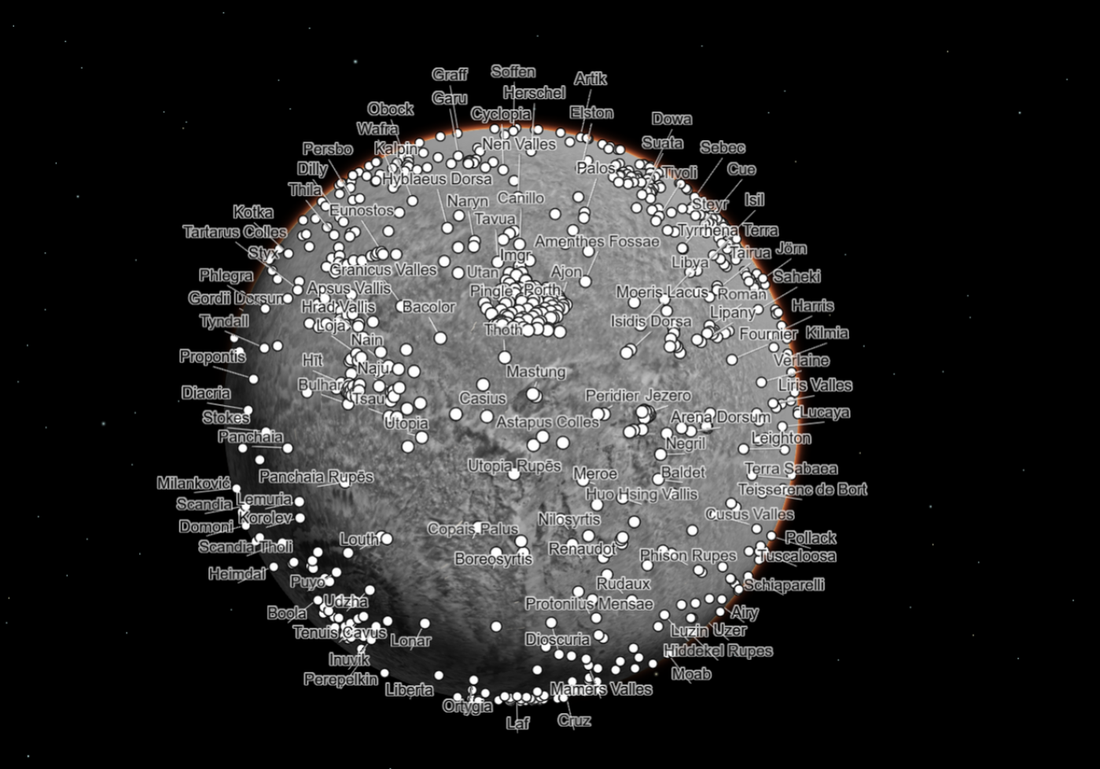
Most detailed, completely interactive image of Mars took scientists 6 years
Share
There's no Google Earth for Mars — no way to zoom in for a closer look at your Martian neighbours' new deck or pickup truck — but Caltech scientists have spent six years composing a 3D image of the Red Planet with the feel of the popular computer app.
The new tool called the Global CTX Mosaic of Mars has 5.7 trillion pixels of data — enough that mapmakers would need the Rose Bowl Stadium in Pasadena, California, to lay out a complete printed version, according to NASA. Each pixel covers about a parking space-size patch of Martian terrain, providing unprecedented image resolution. The highest resolution available at a global scale before this was 100 metres per pixel, making the new mosaic 20 times sharper.
Anyone can now zoom in on the planet and get a close-up of meteorite craters, dust devil tracks, extinct volcanoes, former riverbeds, and seemingly bottomless caves. The creators sought to make Earth's neighbour, on average 140 million miles away, more accessible to researchers and the public, said Jay Dickson, the scientist who led the project.
“Schoolchildren can use this now. My mother, who just turned 78, can use this now. The goal is to lower the barriers for people who are interested in exploring Mars.”

The mosaic covers 99.5 percent of the planet using nearly 87,000 separate images taken between 2006 and 2020 by a camera on the Mars Reconnaissance Orbiter. The robotic spacecraft flies up to 250 miles above the red planet, while its black-and-white Context Camera captures expansive views.
The team designed the tool so that each image in the mosaic connects directly to its original data. The scientists presented a paper on the tool at the 2023 Lunar and Planetary Science Conference.
To create the new mosaic, Dickson developed an algorithm to match images. The photos also needed to have similar lighting conditions and clear skies. Then, what the program couldn't match — about 13,000 remaining pictures — he manually stitched together, a time-consuming three-year undertaking. Any leftover gaps in the mosaic represent areas blocked by clouds or areas that hadn't been photographed before he started working on the project.
So far, over 120 peer-reviewed scientific papers have used a test version of the map, released in 2018, for research purposes.
"Ideally, image mosaics should be held to the same scientific standards of traceability as the science that they facilitate," the authors said in the paper. "All derived data should be traceable back to their source, all methods for the construction of the mosaic should be reported and known artefacts and other limitations of the product should be communicated. These standards have long been applied to the instruments that collect the data, and the science derived from image mosaics, but not to mosaic products themselves."
You’ve come this far…
Why not venture a little further into A.S.S. - our exclusive Australian Space Society.
And keep thrusting Australia into the deep unknown…
#Space_Aus




